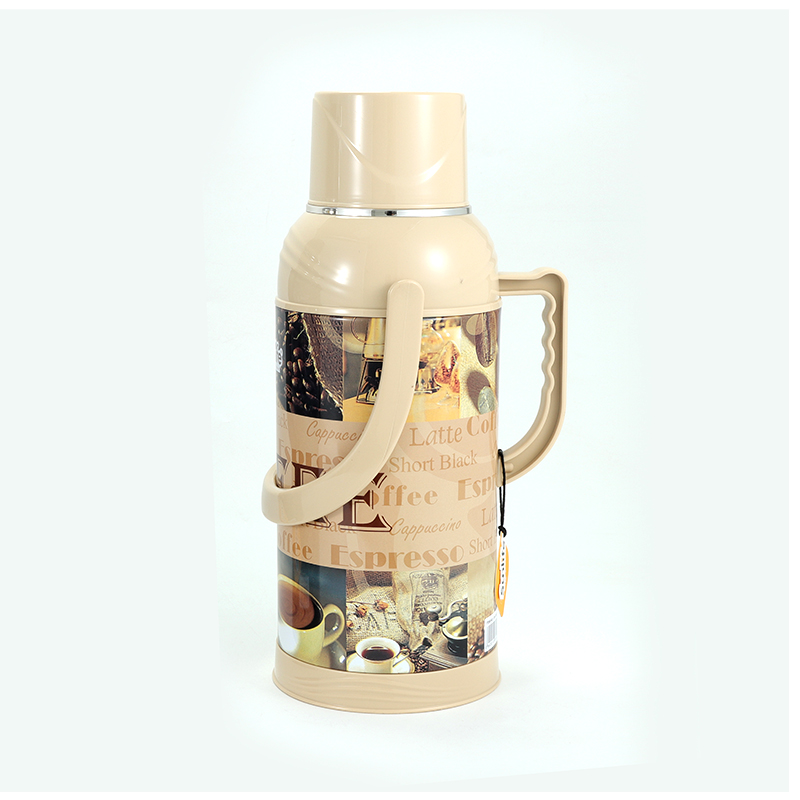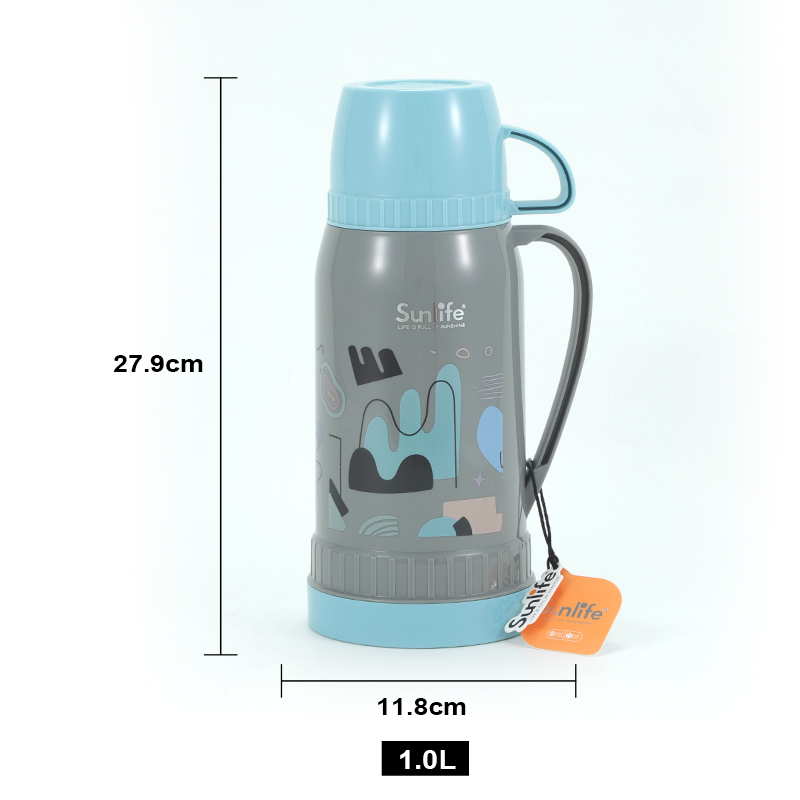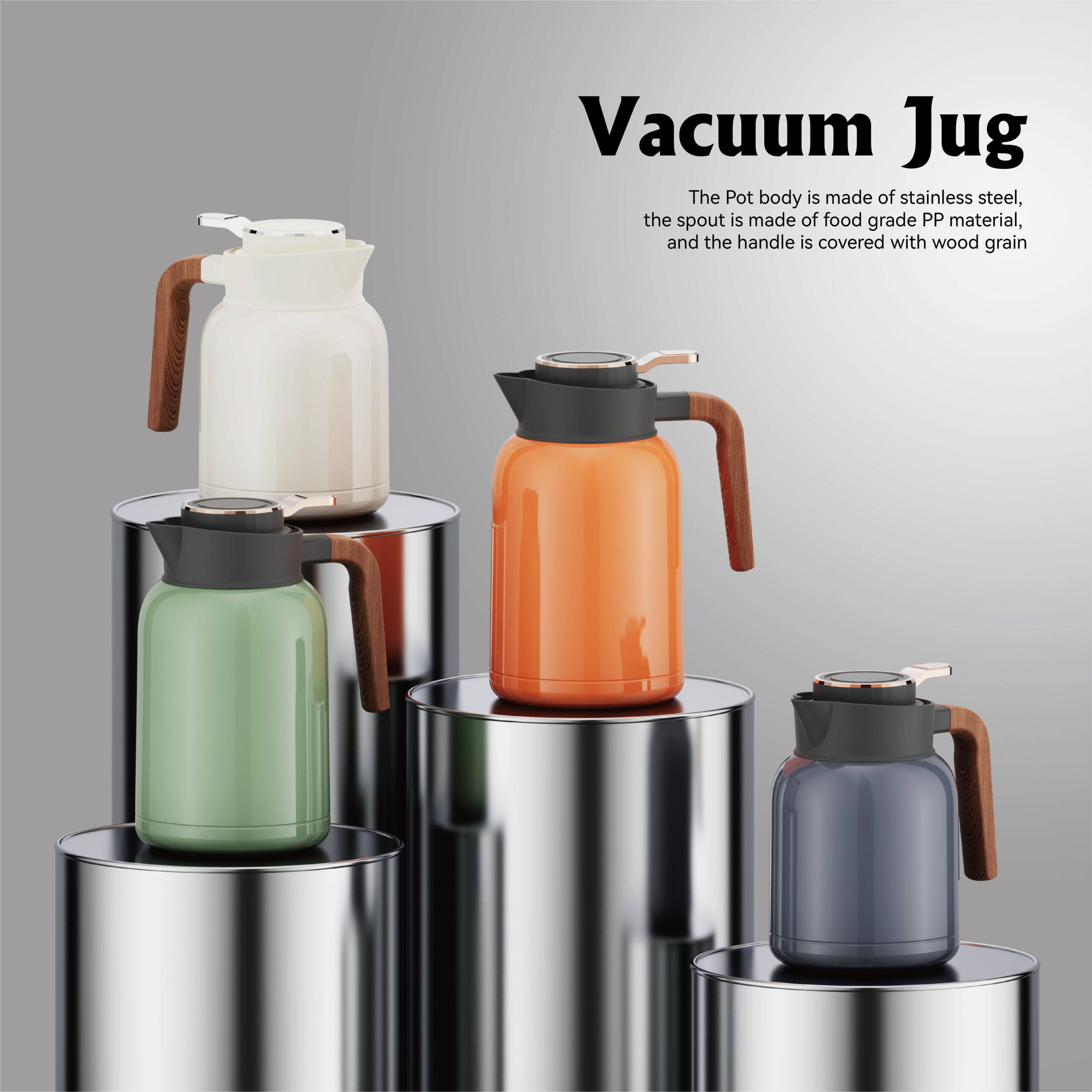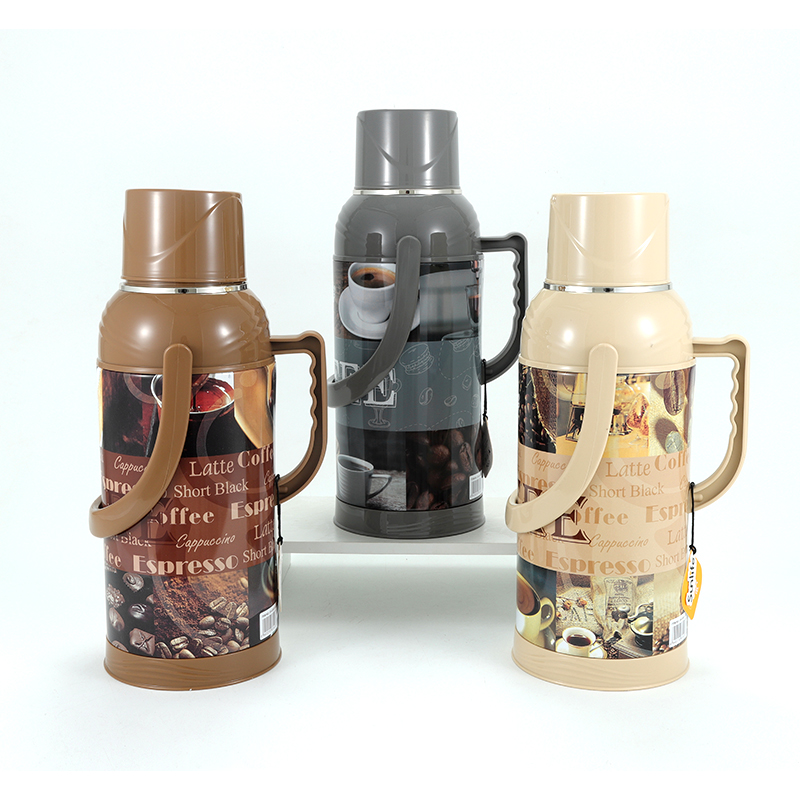Unveiling the Mystery: Understanding Thermos and Vacuum Flasks
When it comes to keeping beverages at the desired temperature for an extended period, thermos flasks and vacuum flasks are indispensable. The usage of thermos bottles is steadily growing in various industries such as manufacturing, warehousing, healthcare, food service, pharmaceuticals, and convenience shops. This product’s efficiency and longevity have led to an increase in demand across these sectors.
According to recent market analyses, the global vacuum flask market size was valued at USD 4408 million in 2023 and is projected to reach USD 5708 million by 2030, with a CAGR of 3.8% during this period. Another study by LP Information indicates that the global vacuum flask market size was valued at US$ 4190.8 million in 2023, with a forecasted size of US$ 5543.4 million by 2030, exhibiting a CAGR of 4.1%.
The steady growth of the vacuum flask market can be attributed to several factors, including the increasing need for portable solutions that maintain beverage temperatures while on the go. Consumers’ desire to keep their drinks or food at the right temperature while traveling, engaging in outdoor activities, working, or relaxing has significantly contributed to this growth.
Furthermore, North America holds a dominant position in the thermos bottle market share, indicating its substantial influence on the industry.
In understanding the differences between thermos and vacuum flasks, it’s essential to delve deeper into their structures and functionalities.
A Closer Look at the Thermos Flask

The thermos flask is a specialized container designed to keep liquids at their desired temperature for an extended period. It comprises an inner and outer wall with a vacuum-sealed gap in between, which minimizes heat transfer by conduction and convection. This unique design stops heat transfer and keeps liquids either hot or cold for extended periods.
Stainless steel thermos bottles are widely utilized by individuals, as they offer enhanced durability, insulation properties, and a sleek appearance. They are known for their ability to maintain the temperature of beverages for extended periods. The rising adoption of thermos bottles due to the increasing desire to enjoy beverages at the ideal temperature without the need for reheating or refrigeration is contributing to the growth of the market.
Structure and Functionality
The thermos flask is essentially a cylindrical stainless steel bottle with a screw cap and a cover that doubles as a drinking cup. There’s a vacuum layer between the inner and outer walls for insulation. This unique design stops heat transfer and keeps liquids either hot or cold for extended periods.
Material Composition
Thermos flasks are manufactured from glass, plastic, and stainless steel and coated with a reflective material to reduce heat transfer by radiation. Both metal and glass thermos are generally considered safe to use. However, some people may have concerns about the potential leaching of chemicals from the materials into their drinks.
Consumer Preference
Consumers are increasingly preferring solutions that keep beverages at their desired temperature for extended periods for further consumption. Thermos bottles provide a convenient solution for hot and cold beverages during commute or outdoor activities.
Market Growth
The rising adoption of thermos bottles due to the increasing desire to enjoy beverages at the ideal temperature without the need for reheating or refrigeration is contributing to the growth of the market. Stainless steel thermos bottles are widely utilized by individuals, as they offer enhanced durability, insulation properties, and a sleek appearance.
In addition, improvements in design and materials have produced thermos flasks that are lighter, more resilient, visually pleasing, appealing to a broader range of customers.
Exploring the Vacuum Flask

The vacuum flask is a thermally insulated container that prolongs the time over which its contents remain hotter or cooler than the surrounding environment. It consists of double walls with a vacuum-sealed gap in between, effectively minimizing thermal transfer by conduction, convection, and radiation. This innovative design ensures that beverages maintain their desired temperature for an extended period, making it an indispensable item for individuals on the go.
Structure and Functionality
The vacuum flask‘s structure includes an inner and outer wall with a vacuum-sealed space in between. The near absence of air molecules minimizes thermal transfer by convection, while reflective surfaces within the vacuum space reduce radiant thermal transfer. Additionally, the separation between the inner and outer wall minimizes thermal transfer by conductance. These combined features effectively decouple the flask’s payload from the external environment, ensuring that beverages remain at their ideal temperature.
Material Composition
Vacuum flasks are commonly manufactured using glass or steel for enhanced insulation properties. The glass type may be fragile but offers superior insulation capabilities, ensuring that beverages remain hot or cold for prolonged periods. On the other hand, steel vacuum flasks are durable and less prone to breakage, providing a reliable solution for maintaining beverage temperatures while on the move.
In-depth market research indicates that advancements in technology and materials used in manufacturing processes have significantly boosted the demand for vacuum flasks. Moreover, stringent emission regulations have necessitated the development and utilization of advanced vacuum flasks to meet compliance requirements.
Market Growth
The expansion of the vacuum flask market can be attributed to several key factors. Firstly, there is a growing demand for high-performance solutions that maintain beverage temperatures while traveling or engaging in outdoor activities. Additionally, customization has become increasingly popular among consumers seeking personalized options to suit their specific needs.
Furthermore, advancements in technology have led to improvements in design and materials used in manufacturing processes. As a result, vacuum flasks are now lighter, more resilient, visually pleasing, and appealing to a broader range of customers.
Difference Between Thermos Flask and Vacuum Flask
While both thermos and vacuum flasks serve similar purposes of maintaining beverage temperatures over time through vacuum insulation technology, there are subtle differences between them. The term “thermos” is often associated with a specific brand; however, it has become widely used as a generic trademark for such products.
One notable difference lies in their construction materials; thermos bottles are typically made from stainless steel with insulating properties and enhanced durability. On the other hand, vacuum flasks may utilize glass or steel for improved insulation capabilities.
Veley is a company with a rich history in the industry, having more than 23 years of experience. They have been focusing on thermos flasks for the same duration, demonstrating their expertise and dedication to this product. Veley takes pride in having their own design and development team, allowing them to create unique and innovative products. They frequently introduce new items, sometimes even every one and a half months, showcasing their commitment to staying ahead of the market trends. Additionally, Veley is dedicated to continuous exploration and research on product structure, with a particular emphasis on the outlet part design. This attention to detail ensures a smooth and beautiful water outlet experience for the users. Furthermore, Veley declares more than 10 national intellectual property patents every year, highlighting their commitment to innovation and protecting their designs.
The Key Differences Between Thermos and Vacuum Flasks
When comparing thermos flasks and vacuum flasks, it’s essential to understand the distinct features that set them apart. Both are designed to maintain beverage temperatures over time through vacuum insulation technology, but there are subtle differences in their construction, materials, and functionalities.
Construction and Insulation
- Vacuum Flasks: Vacuum flasks are thermally insulated double-wall vessels with a vacuum-sealed gap between the walls. This design effectively minimizes heat transfer by conduction, convection, and radiation, ensuring that beverages remain at their desired temperature for an extended period.
- Thermos Bottles: On the other hand, thermos bottles are made of double-walled insulation frequently isolated by an inert gas layer or a vacuum. This unique structure also minimizes heat transfer, maintaining beverage temperatures over time.
Material Composition
- Vacuum Flasks: These specialized containers are commonly manufactured using glass or steel for enhanced insulation properties. Glass vacuum flasks offer superior insulation capabilities but may be more fragile. Steel vacuum flasks, on the other hand, provide durability and reliability for maintaining beverage temperatures while on the move.
- Thermos Bottles: Thermos bottles are widely utilized by individuals as reusable and eco-friendly alternatives to disposable cups or bottles. They are typically made from stainless steel with insulating properties and enhanced durability.
Temperature Retention
- Thermos Bottles: The thermos does have a slight edge in holding temperature for slightly longer periods due to its screw cap, which aids in additional insulation.
- Vacuum Flasks: While both thermos and vacuum flasks excel in maintaining beverage temperatures, the vacuum flask’s innovative design ensures prolonged retention of hot or cold temperatures.
Versatility and Usage
- Thermos Bottles: Widely adopted for daily use due to their convenience and portability. They provide a convenient solution for enjoying hot or cold beverages during commutes or outdoor activities.
- Vacuum Flasks: Ideal for preserving liquefied gases by preventing heat transfer from the surroundings to the liquid. They cater to individuals on the go who require beverages at their ideal temperature over an extended period.
Market Influence
The industry that produces, distributes, and sells insulated containers intended to keep food or liquids at a consistent temperature is known as the vacuum flask market. These items, also referred to as insulated bottles or thermos flasks, cater to diverse consumer needs with their unique features.
The Evolution of Insulated Flasks: A Brief History
The history of insulated flasks, particularly the vacuum flask, is marked by significant milestones that have revolutionized the concept of portable beverage containers. One pivotal event in this evolution was the invention of the Vacuum Flask by Sir James Dewar in the late 19th century. This groundbreaking creation transformed the way beverages were stored and consumed, leading to the development of modern insulated water bottles.
As time progressed, advancements in design and materials led to the evolution of insulated bottles, resulting in lighter, more resilient, and visually pleasing vacuum flasks that appealed to a broader range of customers. These developments catered to diverse consumer needs with their unique features and contributed to the growing demand for high-performance vacuum flasks.
The motorcycle industry played a significant role in driving this demand for advanced vacuum flasks. Stringent emission regulations necessitated the development of innovative solutions that could meet compliance requirements while providing exceptional thermal insulation through passive insulation and reduced thermal transfer.
Furthermore, there has been a notable shift towards utilizing smart flasks with built-in temperature sensors, Bluetooth connectivity, and self-cleaning features. This trend caters to tech-savvy consumers who seek convenience and advanced functionality in their beverage containers.
One ongoing challenge faced by designers is creating vacuum-insulated stainless steel water bottles that excel in thermal insulation performance, durability, and style. This endeavor requires a delicate balance between functionality and aesthetics to meet the evolving preferences of consumers.
In terms of material composition, there has been a comparison between metal and glass vacuum flasks. While metal type vacuum flasks are cost-effective to produce, glass variants offer superior insulation capabilities and durability.
Overall, the evolution of insulated flasks has been characterized by continuous innovation driven by consumer demands for enhanced performance, sustainability, and technological integration. These developments have propelled the industry forward while meeting the diverse needs of modern-day consumers.
Key Historical Events:
- Invention of Vacuum Flask by Sir James Dewar
- Evolution of Insulated Bottles
- Growing Demand for High-Performance Vacuum Flasks
- Thermal Insulation Advancements
- Comparison of Metal and Glass Vacuum Flasks




